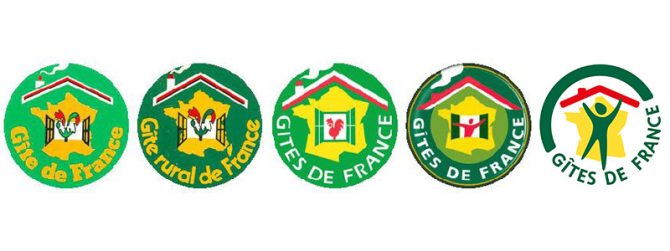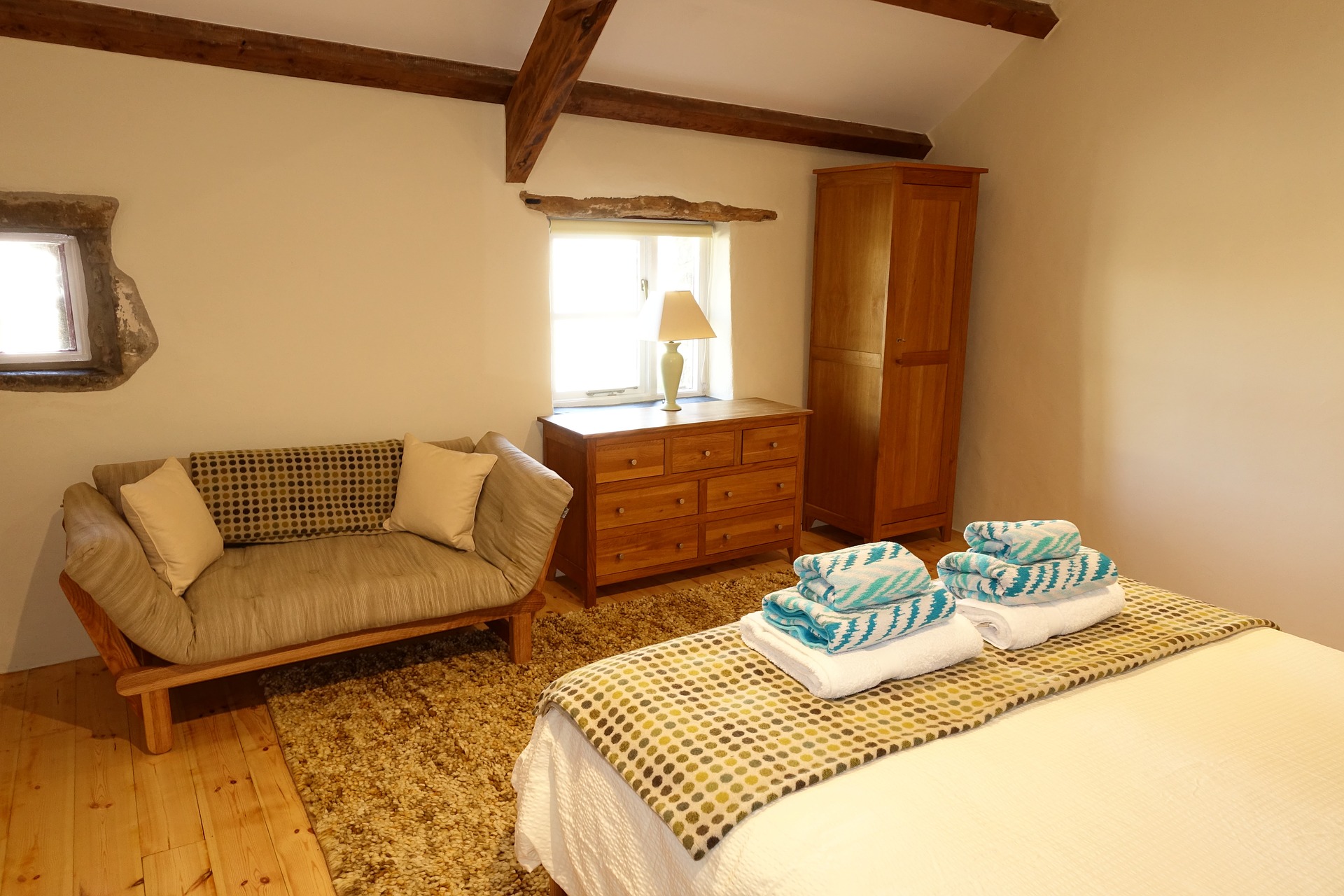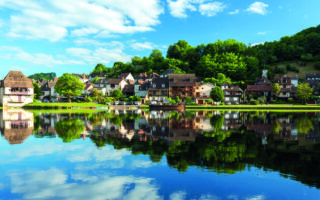Gîtes de France: The History of French Gites
Feature

Gîtes de France is a national federation that rates the country’s gites and chambre d’hôtes —we take a look at how it works and how it all started.
The creation of the first gîte rural
It was the mid-fifties, and France was still recovering from the ravages of war. Money was scarce; farmers were trying to find a way to supplement their income, while city dwellers were yearning to escape to the countryside to find, perhaps, a pond, a bicycle path, and, why not, affordable accommodation.
The first gîte to open to the public was in an abandoned barn located in what was then known as the lower Alps, nowadays the Alpes de Haute-Provence. Then-senator Emile Aubert played a major role in this new endeavour as he was aware that life at the farm was just as challenging as life in the city. Many outbuildings were being abandoned as the rural population was also struggling to make ends meet.
It was in 1951 when he convinced the owners of a sheep farm, Lucien and Denise Roche, to renovate their neglected barn in La Javie, a lieu-dit in the tiny hamlet of Chaudol, into a home suitable for rentals. Dormir chez l’habitant (sleeping at the farm) eventually became the new catchphrase as demand quickly grew for this innovative type of lodging.
A gîte (the “g” is pronounced like the “g” in Gigi) is a self-catering guest house. At the outset, the rooms were, no doubt, sparsely furnished, the mattresses most certainly uncomfortable, the bedspreads and curtains probably did not match, the kitchens were not fully equipped, and visitors usually had to share the one and only bathroom on the premises. Who cared? These farmers offered something unique: the possibility for families of modest means to escape the drudgery of postwar city life.
With children in tow, they could discover the inner workings of a farm, admire the livestock up close, enjoy fresh eggs, butter and milk, bread baked daily and homemade jams. With spectacular views, the enticing scent of lavender and thyme come summer, the welcoming sunshine and the quintessential stillness of the night, these families were living in a postcard-perfect environment for a week or two.
Mornings would take on a new twist. It was a pleasant surprise to be able to prepare breakfast while watching out of the window of a rural abode or from a terrace, sheep and cows grazing quietly in nearby fields while listening to birds chirping in the trees. During the day, they could visit nearby villages, chapels, vestiges of a chateau, swim in a lake or river, or tread along hiking trails—what a change from the noisy streets, the dust, the constant drone of urban life.
Experiencing a leisurely stay in la France profonde, deep rural France, was more than just a wish; it was a godsend for thousands of families seeking an affordable holiday. As an added bonus, it was an opportunity to make friends during le dîner en famille, the family dinner, when the owners of the farm invited their guests into their own homes for a sampling of local fare.

Le Tourisme vert is born
This unique type of holiday was eventually branded le tourisme vert, the green option which is now in full swing. The Fédération Nationale des Gîtes de France was officially created in 1955 and is about to celebrate its 67th anniversary this coming year.
Over the years, the gîte rural concept spread all across France. In 1955, there were already one hundred and fifty gîtes in six départements; by 1957, there were six hundred in thirty départments. Today there are a little over seventy thousand gîtes across the country and French territories overseas—a fitting tribute to Senator Aubert’s initiative.
The birth of the chambres d’hôtes
But the success story does not end there. In 1969, the chambres d’hôtes concept came about. A chambre d’hôtes is actually a bed and breakfast, where you may share dinner at the owners’ table, upon request. Breakfast is included and is usually a hearty affair, with an abundance of croissants, fresh locally baked bread, homemade jams, and fresh fruit and juice, etc.
Whereas a gîte is rented from Saturday to Saturday, a chambre d’hôtes usually greets guests for a night or two, or longer, with that added bonus of la table d’hôtes, a homecooked dinner, a welcome respite as guests do not have to go to a restaurant on that first night of arrival.
It also gives them the opportunity to befriend their hosts and other guests. The meals are not expensive, wine is included, and the conversation is usually most entertaining. People from different walks of life who have never met before get to share a relaxed evening in the best of company.

Classifications of Gites de France
Gîtes de France is also aware that all gîtes and chambres d`hôtes are not created equal. A system of classification was therefore adopted in 1969.
One to four épis (stalks of wheat) replace the all too familiar stars and are easily recognizable by the green, yellow and white logo, displayed at the entrance of every gîte and chambres d’hôtes.
Gîtes de charme now have a 5 épis rating, offering a stay in an exceptional home set amid beautiful surroundings. There is also the possibility of renting a gîte in the form of a chalet or a mobile home in a camping ground. Their newest addition is a gîte in a city, called city break.
Online bookings with Gites de France
The success of this organization is also due to the fact that every départment has its own head office. The main office, la Maison du Tourisme Vert, has been located in Paris since 1974, but it is up to local delegations across France to set up their own branch. They have the expertise, know the demands and the constraints of their region the best, and can help members plan and design future installations. They can provide grants, have a legal team on hand, and also hold informative seminars. Costly mistakes can therefore be avoided.
In 1998, Gîtes de France created its own website, making it easier for browsing and finding the right holiday rental. They also have a reservation platform and can make the owner’s life less stressful as it handles their reservations and arranges for full payment ahead of time, for a small fee, of course.
Nowadays, it offers the whole gamut of holiday rentals to please every demand. For those who are sensitive to the environment, the ecogîtes are built with eco-friendly building materials and use renewable energy.
Gîtes Panda are specifically found in parcs naturels, parks dedicated to nature, gîtes de pêche for those who like fishing, gîtes de neige for skiers, gîtes équestres for those fond of horse riding, gîtes d’enfants for children under age, and, commendably, they also have gîtes designed specifically for disabled clients.
Booking with Gites de France
With Gîtes de France the word client is shunned. Owners are called hosts. Hosts greet guests and do their utmost to make them feel at home.
Today, Gîtes de France is a thriving organization, the crown jewel of the Ministry of Tourism. Staffed by over 600 employees across France, and with a recent turnover of around two (2) billion euros, it is considered the top holiday rental network in Europe. A major success story that began with a simple idea.
Thank you, Senator Aubert.
Share to: Facebook Twitter LinkedIn Email
By Denyse Betts
Leave a reply
Your email address will not be published. Required fields are marked *




REPLY